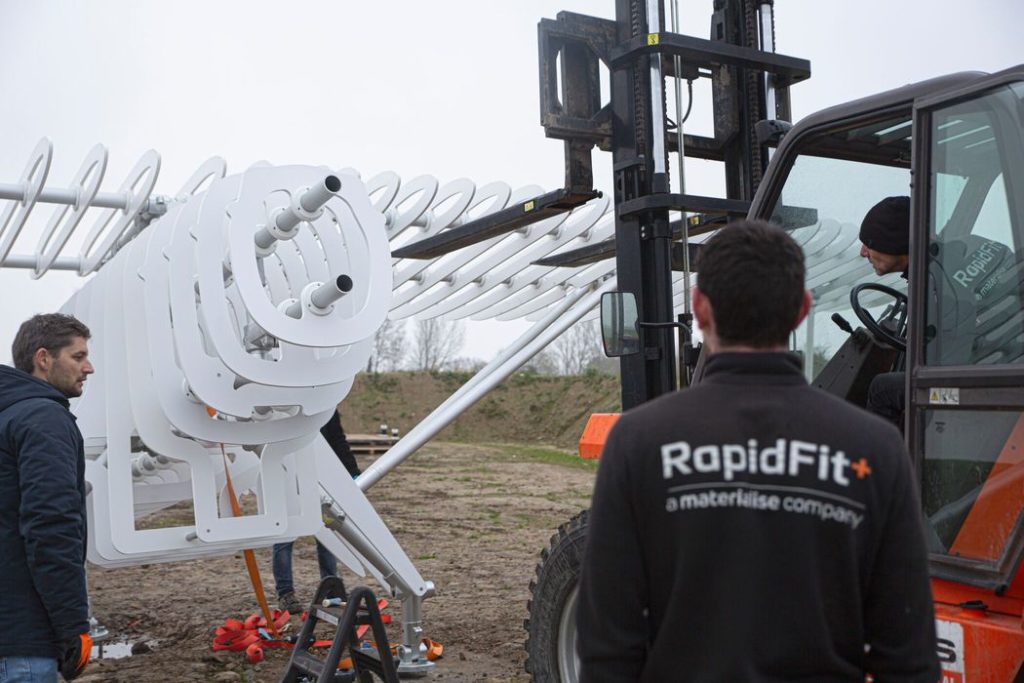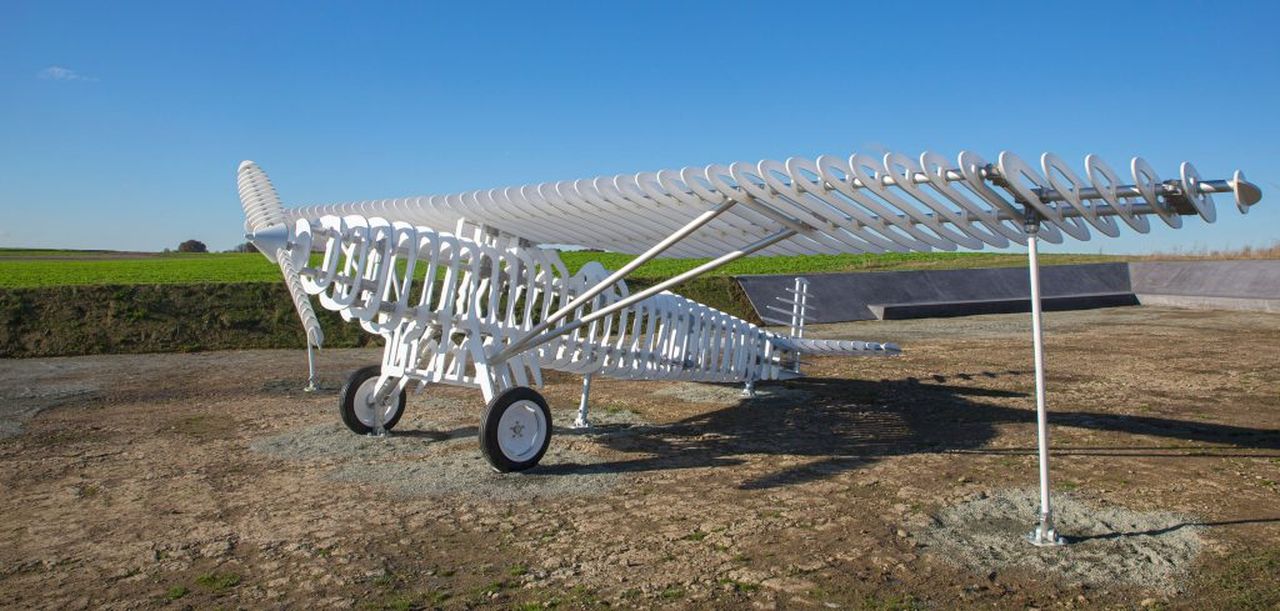
This week’s selection is a life size 3D printed airplane model by Materialise Manufacturing.
Two years ago Materialise Manufacturing was approached by Vlaamse Landmaatschappij, a Belgian government agency dedicated to landscape development. The project was to entice visitors to a historic airfield in Honsem that was extensively used in World War II.
After some consideration, the plan was to build a replica of the Renard R.31 aircraft, a single-engined reconnaissance vehicle originally built in 1934 for the Belgian Air Force. R.31s flew 54 reconnaissance missions for the Allied defense forces during the successful German Blitzkrieg invasion in 1940. Unfortunately, all remaining R.31s were destroyed by the Germans.
The project was to provide a model of this aircraft, yet do so in a unique fashion. The design uses contour curves spaced regularly along the fuselage and wings, evoking a kind of “ghost” airplane appearance.
Nicolas Meiresonne of Materialise’s Design & Engineering services explained:
“Rather than create an exact replica of the airplane, VLM wanted a more abstract representation. They were looking for a ‘ghostlike’ rendition that still looks recognizable as the Renard 31. So we agreed on a concept using slices, showing cross-sections of the plane, using a combination of 3D printed parts and traditionally manufactured contours.”

The 100+ curves were made from PVC foam, and were not 3D printed. However, all curves were mounted on the aluminum frame using 3D printed connectors, some 450 in total.
Interestingly, a number of jigs were also 3D printed and used to precisely assemble the pieces at the factory.
This model also has to undergo some unusual environmental conditions. Materialise explains:
“The completed model will be displayed outdoors in an open field. Therefore, like a real airplane, it needs to be able to withstand different weather conditions, all while staying firmly on the ground! The creators wanted to ensure that it can also survive the wear and tear of visitors who can’t resist touching it while taking selfies. The Materialise Design & Engineering team undertook an FEA analysis with different load scenarios and wind speeds of up to 100km/hour and are confident that it will look just as good in the years to come as on the day it is unveiled.”
While this aircraft is definitely not new, it is now portrayed in an entirely new way, with new technologies.
Via Materialise

